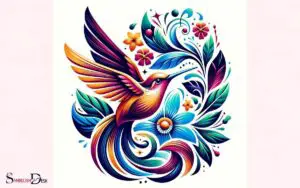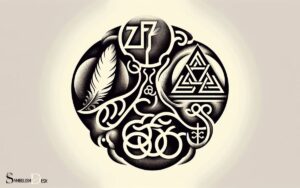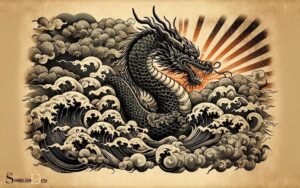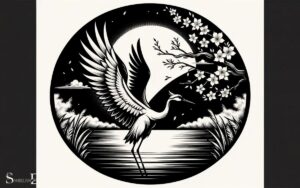Angel Tattoo Symbols and Meanings: Hope!
Explore the profound symbolism of angel tattoos, which encapsulate spiritual protection, divine connection, and moral guidance.
These tattoos often represent guardianship, hope, and the link between earth and the afterlife, making them a popular choice for those seeking a tattoo with deep spiritual significance.
Angel tattoos are rich in meaning and can vary widely in design:
- Guardian Angels: Represent protection and comfort.
- Angel Wings: Symbolize freedom, spiritual elevation, and the soul’s ascent.
- Fallen Angels: Often indicate struggle or rebellion.
- Archangels: Depict strength and leadership, each with specific attributes.
- Cherubs: Associated with innocence and love, commonly linked to Cupid.
For instance, a tattoo of Archangel Michael might denote courage and victory over evil, while cherub designs might be chosen to represent love and innocence.
Angel tattoos are not just skin-deep; they carry profound symbolism that resonates with the wearer’s inner values and beliefs.
Dive into the mystical realm of angel tattoo symbols and their meanings. From the deep-seated history of angelic representations to the various meanings behind guardian angel tattoos, this exploration uncovers the cultural and individual importance of these enduring symbols.
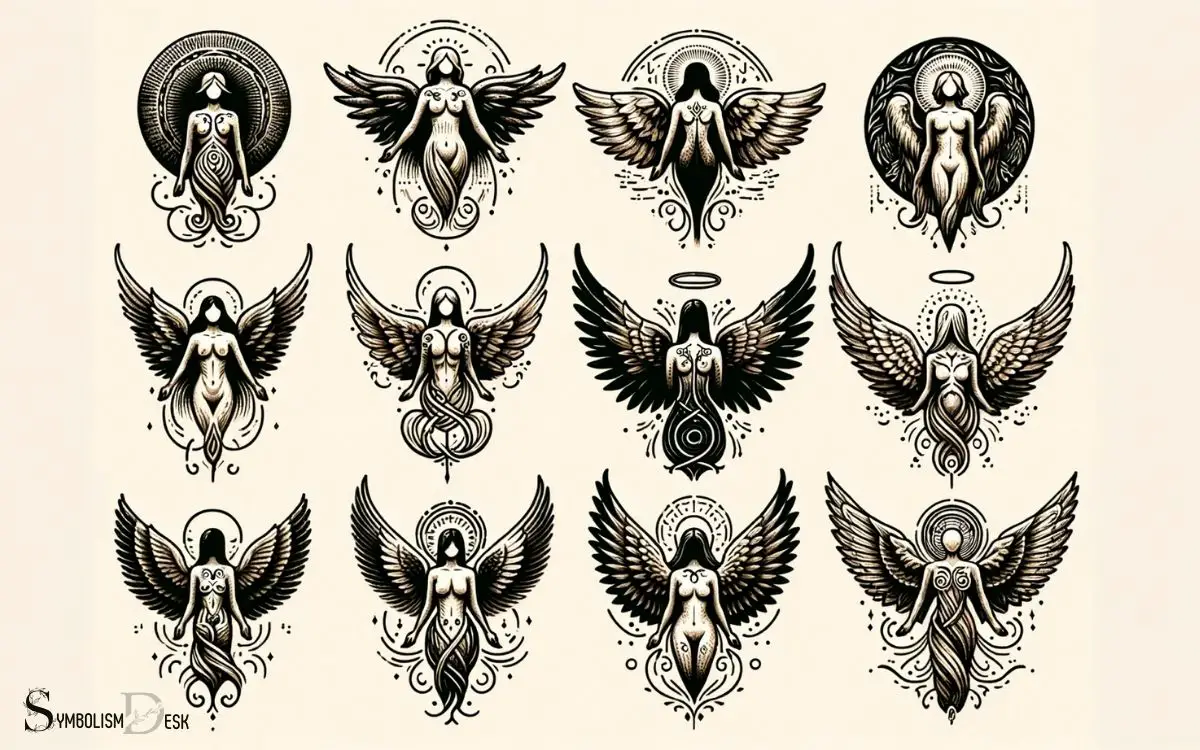
Key Takeaway
The History of Angel Tattoos
The history of angel tattoos dates back to ancient civilizations, where they were used as symbols of protection and guidance.
In ancient Egypt, angels were believed to be messengers of the gods, and their images were often used in art and religious practices.
Similarly, in ancient Greece and Rome, angels were seen as divine beings who served as intermediaries between the earthly and spiritual realms.
During the Middle Ages, angel tattoos became associated with Christianity, symbolizing faith and divine protection.
In more recent history, angel tattoos have evolved to represent a personal connection to spirituality and the belief in the presence of guardian angels.
Today, people often choose angel tattoos as a way to honor a loved one or to seek protection and guidance in their own lives.
Different Types of Angel Symbols
Angelic wings are a timeless symbol of freedom, protection, and spirituality, often depicted in various styles such as feathered or ethereal.
The halo, a circle of light surrounding the head, holds spiritual significance, representing divinity and enlightenment.
Additionally, guardian angels are believed to watch over and protect individuals, providing comfort and guidance in times of need.
Angelic Wings Symbolism
How do different types of angel symbols represent themselves through the symbolism of their wings?
Angelic wings hold significant symbolism in various cultures and beliefs. In Christianity, wings are often depicted as a symbol of divine protection, representing the angels’ role as messengers of God.
The number of wings can also hold specific meanings, with angels being depicted with two, four, or six wings, each carrying its own symbolism.
In art and literature, wings are often associated with freedom, spirituality, and guidance. The size, color, and shape of the wings can also convey different messages, such as the purity of white wings or the strength of golden wings.
Understanding the diverse symbolism of angelic wings can provide insight into the depth of angelic representation in various contexts.
This symbolism seamlessly transitions into the subsequent section about ‘halo and its significance’.
Halo and Its Significance
Representing divine illumination and spiritual purity, the halo is a key symbol in angelic iconography, underscoring the celestial nature of angel figures.
The significance of halos in angel tattoo symbols is multifaceted:
- Divine Connection: Halos represent a direct link to divinity and the divine realm.
- Spiritual Enlightenment: They symbolize enlightenment and spiritual awakening, signifying the angel’s heightened spiritual awareness.
- Symbol of Holiness: Halos denote holiness, emphasizing the pure and virtuous nature of angels.
- Heavenly Presence: They highlight the angel’s heavenly origins, indicating their association with higher realms.
- Protection and Guidance: Halos also signify the angel’s role as protectors and guides, offering comfort and assurance to those in need.
Understanding the significance of halos in angelic symbolism provides insight into the depth of angel representations in tattoos.
Transitioning to the subsequent section about ‘guardian angel representation,’ the article will delve into the symbolism associated with guardian angels.
Guardian Angel Representation
When considering angel tattoo symbols and meanings, it is important to explore the various types of guardian angel representations and their significance in tattoo art.
Guardian angels are believed to watch over and protect individuals, and they hold a special place in many religious and spiritual traditions.
Below is a table showcasing different types of guardian angels and their symbolic meanings:
| Guardian Angel Type | Symbolic Meaning |
|---|---|
| Archangels | Leadership and protection |
| Seraphim | Divine love and light |
| Cherubim | Innocence and guidance |
Each type of guardian angel carries its own unique symbolism, allowing individuals to choose a representation that resonates with their personal beliefs and values.
Incorporating these symbols into angel tattoos can serve as a constant reminder of protection, guidance, and love in life.
Angel Wings Tattoo Meanings
Angel wings tattoos are often chosen to symbolize protection and freedom. People get these tattoos for various reasons, and the meanings behind them can differ from person to person.
Here are some common interpretations of angel wings tattoos:
- Protection: Many individuals believe that angel wings serve as a symbol of protection, acting as a guardian against harm.
- Freedom: Some people get angel wings tattoos to represent a sense of liberation and the ability to break free from constraints.
- Spirituality: For those with a religious or spiritual inclination, angel wings can signify a connection to higher powers or a belief in divine guidance.
- Remembrance: Angel wings tattoos may also serve as a tribute to a loved one who’s passed away, symbolizing their spirit watching over the bearer.
- Strength: The wings can be seen as a representation of inner strength and resilience, providing the wearer with courage during challenging times.
Angelic Figures in Religious Context
Angelic figures hold significant importance in various religious traditions. They are often depicted as messengers of God or divine beings.
These representations can be found in religious art, such as paintings and sculptures. Through this art, spiritual messages and beliefs are conveyed.
Understanding the symbolism and meanings behind these angelic figures can offer insight into their religious and spiritual significance. This is particularly relevant for individuals who choose to express their faith through angel tattoos.
Religious Representations of Angels
Where do religious representations of angels appear in various religious contexts?
Religious representations of angels are prevalent in various religious traditions and can be found in different contexts, including:
- Christianity: Angels are prominent in Christianity, with roles such as messengers, guardians, and servants of God.
- Islam: In Islam, angels are believed to be spiritual beings created from light, serving as messengers of God and guardians of individuals.
- Judaism: Angels play a significant role in Jewish theology, serving as messengers of God and performing various tasks in the divine realm.
- Buddhism: In Buddhism, angels, or devas, are celestial beings who reside in heavenly realms and can interact with humans.
- Hinduism: Angels, known as devas or devatas, are divine beings in Hinduism, often depicted as benevolent and powerful entities.
Religious representations of angels vary across different faith traditions but often portray them as divine messengers and protectors.
Significance in Religious Art
In religious art, depictions of angelic figures hold significant symbolism and are often portrayed as messengers or guardians.
These representations are deeply rooted in religious traditions and hold a special place in the hearts of the faithful.
Below is a table that highlights the significance of angelic figures in various religious traditions:
| Religious Tradition | Significance of Angelic Figures |
|---|---|
| Christianity | Messengers of God and protectors of humans |
| Islam | Agents of God’s will and protectors of believers |
| Judaism | Intermediaries between God and humanity |
| Buddhism | Symbols of compassion and enlightenment |
| Hinduism | Divine beings serving as messengers and guardians |
These depictions in religious art serve to remind believers of the spiritual realm and the protective presence of these celestial beings. Now, let’s delve into the symbolism of guardian angels.
Symbolism of Guardian Angels
Guardian angels are spiritual beings believed to offer protection and guidance to individuals. In many cultures and spiritual traditions, guardian angels are seen as benevolent forces that watch over and support people throughout their lives.
Here are some common symbolism associated with guardian angels:
- Protection: Guardian angels are often seen as protectors, shielding individuals from harm and danger.
- Guidance: They’re believed to provide guidance and offer comfort during difficult times.
- Love and compassion: Guardian angels are seen as embodiments of love and compassion, providing emotional support and care.
- Divine intervention: Many people believe that guardian angels can intercede in earthly events to bring about positive outcomes.
- Spiritual connection: They’re seen as a link between the divine and the human, fostering a connection to the spiritual realm.
Cultural Variations in Angel Tattoos
How do different cultures incorporate angel imagery into their tattoo designs?
Angel tattoo designs vary greatly across different cultures, each with its own unique interpretations and symbolism.
- In Western cultures, angels are often depicted as guardians, protectors, and messengers of God, with wings and a halo as common features in the designs.
- In contrast, in Eastern cultures such as Japanese and Chinese, angel tattoos may be influenced by local folklore and mythology, portraying celestial beings with distinct characteristics and symbolism.
- In Latin American cultures, angels are often associated with religious iconography and are depicted in a more traditional, religious context.
Understanding the cultural variations in angel tattoos allows for a deeper appreciation of the diverse meanings and representations of these celestial beings in different parts of the world.
Angelic Tattoos and Personal Expression
Angelic tattoos provide individuals with a powerful means of personal expression, allowing them to convey their beliefs, values, and emotions through the symbolism of angels. These tattoos can be deeply personal and hold significant meaning for the wearer.
Here are some ways in which angelic tattoos can serve as a form of personal expression:
- Representation of faith and spirituality
- Tribute to a loved one who’s passed away
- Symbol of protection and guidance
- Expression of hope and positivity
- Reflection of one’s inner strength and resilience
Through these symbols, individuals can communicate profound aspects of their identity and experiences, making angelic tattoos a poignant form of self-expression.
Whether it’s a small cherub tattoo or a full back piece of angel wings, each tattoo holds a unique significance for the person wearing it.
Angelic Symbol Tattoos and Meanings
Angelic symbol tattoos are popular choices for those seeking to express their spirituality, faith, or connection to angelic beings. Angels are often associated with divine protection, guidance, and comfort.
Here are some common angelic symbols and their meanings:
Angel Wings: Angel wings are a classic symbol of angels and represent protection, freedom, and guidance. Many people choose to get tattoos of angel wings to symbolize their belief in guardian angels watching over them. Angel wings are often associated with spirituality and serve as a reminder of the presence of divine beings offering support in our lives. Their graceful appearance also makes them a popular choice for artistic expression in tattoos, blending beauty with deep personal significance. For some, exploring designs like angel wings leads to further searches for meaningful iconography, such as the Led Zeppelin tattoo symbols meaning, where band symbols carry unique, mystical connotations tied to identity and creativity.
Angel Feathers: Feathers are often seen as a symbol of angels’ presence and communication. A tattoo of a single feather or a group of feathers can represent messages from the divine or a connection to the angelic realm.
Halo: The halo is a symbol of divinity and holiness. It is often depicted above an angel’s head in religious art. Getting a halo tattoo can symbolize a connection to higher spiritual realms or a desire to embody angelic qualities like purity and goodness.
Archangel Symbols: There are several archangels in various religious traditions, each associated with specific qualities or attributes.
You can choose a tattoo of an archangel’s name or their associated symbol to invoke their protection or guidance. For example, Archangel Michael is often associated with courage and protection and is depicted with a sword.
Angelic Script: Some people choose to get tattoos of angelic scripts or inscriptions from religious texts, such as the Hebrew script for “angel” or “messenger of God.” These tattoos can be a personal reminder of one’s faith or belief in angelic beings.
Guardian Angel: A guardian angel tattoo can be a representation of the belief that a specific angel is watching over and protecting the individual. Some people choose to get these tattoos with the name or image of their guardian angel, if they believe they have a specific one.
Cherubim: Cherubim are often depicted as chubby, childlike angels and are associated with love and innocence. A cherub tattoo can symbolize love, joy, and purity.
Angelic Numbers: Some people believe in angel numbers, which are sequences of numbers believed to carry divine messages from angels. You can get a tattoo of your personal angel number or a number sequence that holds meaning for you.
Angelic Symbols from Various Traditions: Different cultures and religions have their own angelic symbols and representations.
For example, in Christian tradition, the symbol of the dove represents the Holy Spirit and is sometimes associated with angels. Research symbols from your specific faith or belief system to find one that resonates with you.
Before getting an angelic symbol tattoo, it’s important to consider your personal beliefs and the specific meaning you want the tattoo to convey.
Consult with a tattoo artist who specializes in symbolic tattoos to create a design that is meaningful and aesthetically pleasing to you.
Additionally, be mindful of the placement of the tattoo, as different body locations can carry different symbolism and significance.
Conclusion
Angel tattoos have a rich history and carry diverse meanings across different cultures. Whether it’s the symbolism of protection, guidance, or spiritual beliefs, angel tattoos serve as a powerful form of personal expression.
From the majestic wings to the serene figures, these tattoos embody a sense of peace and hope. Like a guardian angel watching over, these tattoos continue to inspire and uplift those who wear them.

